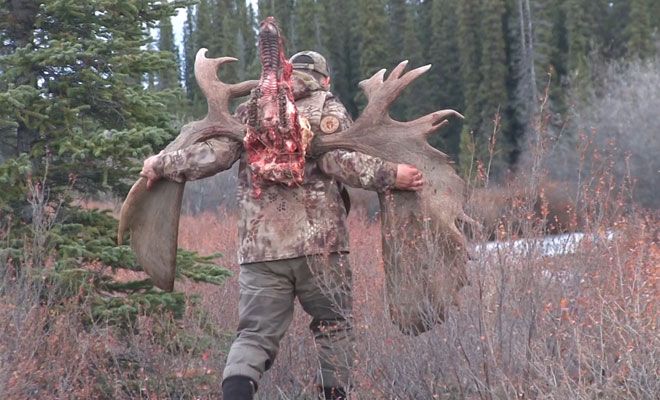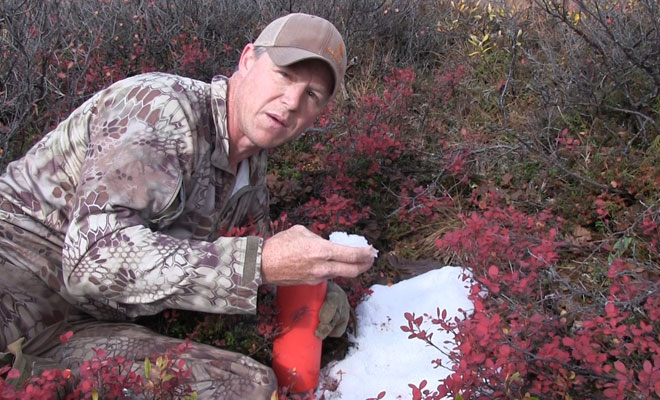 Backcountry Hunting Blog by Larry Bartlett of Pristine Ventures
Backcountry Hunting Blog by Larry Bartlett of Pristine Ventures
Backcountry Hunting Health Study pinpoints caloric demands on arduous river hunts
Dating back about 40k years ago, hunters were actually survivalists. They developed projectiles and knives from stones, bones, ivory, and antlers. With these tools, they sought out river drainages and targeted herds of migrating prey. In contrast to many hunting experiences in the 21st century, their efforts to secure meat were likely coupled with a terra incognita or unknown land experience that constantly challenged their minds and bodies to perform and to survive. We are here today because they knew about energy expenditure and that calories count!
The nomadic or seminomadic nature of the hunter-gatherer meant living in a society of continual movement. Long before the first Planet Fitness or “Muscle Beach”, the physical activity required for survival provided health benefits that many of us strive to achieve today. Instead of struggling to find time to work out, they most likely sought out ways to conserve energy. Backcountry hunting offers a partial immersion into similar scenarios whereby shelter, clothing, and food needs must be planned and met with regular and dedicated effort. This level of purpose is much different than the convenient application of activity into our modern civilization. While appealing to some, a high level of responsibility is required for an optimal and safe backcountry experience.
Many hunters who plan backcountry hunting adventure for the first time or the 20th time plan their nutritional intake with a relatively high level of precision. One reason for this is simple – weight. If you take it, you have to carry it or manage it. As a result, most of us plan on consuming ~2-3k calories/day. Why do we choose this amount? Is this enough?
To help answer some of these questions, we recently conducted a study in conjunction with Universities of Alaska, Montana and Wisconsin. We measured energy expenditure during an actual backcountry float hunting adventure in Alaska using a method called the doubly labeled water (DWL) technique. Before your eyes glaze over with science goo, the method is relatively simple. Participants consumed the DLW, and then the scientist measured the removal rates of hydrogen and oxygen in the urine using a German made Isotope Ratio Mass Spectrometer (aka.. very expensive counter). The hydrogen label in pee stays the same but oxygen label in pee increases in proportion to caloric expenditure. While we are awaiting the complete analysis of these data, the method was applied during a US Army Ranger training course and demonstrated that soldiers utilize ~5k kcal/day. Lets say our hunters utilized 20% less calories; that still leaves them with a ~1-2k deficit/day. How does this deficit affect us metabolically? We will soon answer some of those questions using the results of the first scientific project on modern backcountry hunting.
In studies conducted in Yukon Arctic Ultra (longest and coldest ultramarathon) and Alaska Mountain Wilderness Ski Classic (a 120-150 cross country ski event across an Alaskan mountain range) athletes, caloric intake is also much less than caloric expenditure. These individuals compete for 5-12 days covering extreme distances in arctic winter conditions! Surprising to some, they maintain their lean tissue throughout the events without access to trendy smoothies. Regular consumption of high quality protein, fat and carbohydrate calories in small amounts is their effective strategy.
You might ask the question? What is a high quality protein? Generally speaking, the answer is: one that contains all 9 essential amino acids in proportion to the needs of our body. These amino acids are also important in maintaining our wits and resilience when the weather or conditions go sour. Fat intake while hunting is a highly efficient dietary strategy with regard to weight efficiency. For comparison, 1 gram fat = 9.1 kcal, 1 gram of carbohydrate = 4.1 kcal, 1 gram of protein = 4.1 kcal. We carry smoked salmon on almost every hunt. The calorie/weight ratio of 1.2 is highly efficient, the high quality protein value is extremely high, and most of the fats are the healthy polyunsaturated variety that can also help dampen inflammation. The best carbohydrates are usually dehydrated noodles, potatoes or green vegetables. They are light and their digestion is more complicated.. hence the term complex carbs and longer period of digestion.
Modern fabrics, footwear, dehydrated food and other gear offer the 21st century hunter with a tremendous advantage with respect to equipment. On the other hand, our ancestors would most likely leave us in the dust due to their intimate knowledge of the environment. Based on what we know about the science of physical and mental stress, the constancy of their experience in the wilderness promoted adaptations that were necessary for survival. In other words, their never ending diligence devoted to survival kept their bodies and minds sharp. Maybe this edge represents the true allure of backcountry hunting.
Larry Bartlett is the owner of Pristine Ventures in Fairbanks who specialize in planning unguided hunting trips for clients. Larry is the author of The Complete Guide to Float Hunting Alaska and Float Dragging Alaska and the designer of the PR-49 packraft and several packraft designs.



















